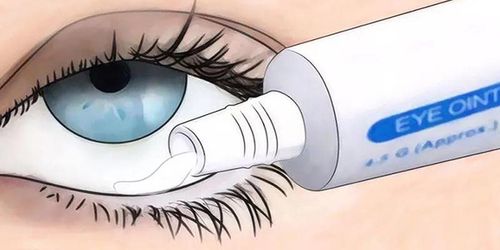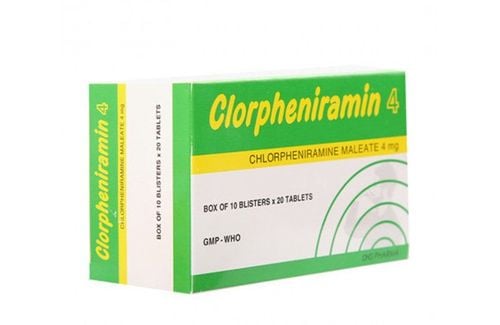This is an automatically translated article.
The article was professionally consulted by Specialist Doctor II Nguyen Thai Hung - Department of Medical Examination & Internal Medicine - Vinmec Danang International Hospital. Specialist II Nguyen Thai Hung has 13 years of experience as a doctor treating eye diseases.Conjunctivitis or pink eye is an inflammation or infection of the conjunctiva that causes the eyelids to swell and cover the eyeball. When the small blood vessels in the conjunctiva become inflamed, they become more visible, which is what causes the whites of your eyes to appear red or pink.
1. What is chronic conjunctivitis?
The conjunctiva is a thin, almost transparent membrane that covers the anterior sclera and inner eyelids. The conjunctiva contains mucus-producing tubes that help lubricate the eye, prevent foreign objects from entering the eye, and reduce eye infections. Conjunctivitis is an inflammation of the conjunctiva. When inflammation persists for more than 3-4 weeks, it is considered chronic conjunctivitis.Causes of conjunctivitis are usually bacterial or viral infections, allergic reactions... Although conjunctivitis can be uncomfortable, it rarely affects your vision. Treatments can help ease the discomfort of the disease. Because conjunctivitis can be contagious, early diagnosis and treatment can help limit its spread.

2. Symptoms of chronic conjunctivitis
The most common symptoms of conjunctivitis include:Redness in one or both eyes Itching in one or both eyes Discomfort in one or both eyes Drainage or discharge in one or both eyes Layer while you are sleeping at night and you will find it difficult to open your eyes in the morning. There are a number of other serious causes that can also cause red eyes with symptoms such as eye pain, a feeling that something is stuck in your eye, blurred vision, and sensitivity to light. If you experience these symptoms, you should go to a medical facility early for timely examination and treatment, to avoid affecting your vision.
Contact lens wearers should stop wearing contact lenses as soon as pink eye symptoms begin. If your symptoms don't improve within 12 to 24 hours, make an appointment with your eye doctor for treatment to help prevent a more serious eye infection related to contact lens use.

3. Classification of causes of chronic conjunctivitis
Viruses are the most common cause and are the most contagious. Most cases affect both eyes. The patient feels like something has entered the eye, causing watery eyes, pus discharge, red eyes, and swelling of the eyelids. Eyes are sensitive to light and cannot see clearly. The eye becomes red, oozing pus, but the cornea and pupil remain normal. Accompanied by other symptoms such as sore throat, fever and headache. Eye infections last 1-2 weeks and usually go away on their own. Bacterial strains usually infect one eye but can occur in both. Your eyes will secrete a lot of pus and mucus. Bacterial infection of the eyelid margin can lead to chronic conjunctivitis. The patient has eyelid pain with a little pus. Eyes look normal or slightly red. Allergies cause watery, itchy, and red eyes in both eyes. You may also have an itchy, runny nose. The cause is unknown, but it is more common in people with asthma and eczema or those with persistent allergies. Patients experience repeated itching, thick pus, sensitivity to light, blurred vision, and discoloration of the eyes. Treatment should be prescribed by an ophthalmologist. Chronic allergic conjunctivitis occurs in adults or children with sudden, itchy eyes caused by contact with an allergen. The eyelids and conjunctiva are markedly swollen and watery and usually do not cause redness. The disease can heal on its own quickly. Neonatal conjunctivitis is a serious illness that affects newborn babies. The cause of neonatal conjunctivitis is difficult to determine because in many cases the symptoms are the same. Neonatal conjunctivitis can be caused by a blocked tear duct, infection, or irritation when antibiotic eye drops are used at birth to prevent some infections from the mother's genital tract from being passed on to her baby. The mother may be asymptomatic at the time of delivery but may be carrying bacteria or viruses that can infect her baby. Neonatal conjunctivitis caused by sexually transmitted diseases (such as gonorrhea, chlamydia) can be very serious.
4. Risk factors for chronic conjunctivitis
Frequent exposure to allergens causes you to develop allergic conjunctivitis over and over again. Contact with people infected with viral or bacterial conjunctivitis Use contact lenses, especially overnight contact lenses.5. Prevention of chronic conjunctivitis
To prevent conjunctivitis from turning into chronic conjunctivitis and to prevent spreading the disease to others, you need to practice good hygiene to keep it under control such as:Do not touch your eyes with your hands. Wash your hands often. Use clean towels and washcloths every day. Do not share face and bath towels with others. Change or clean pillowcases regularly. It is not recommended to use certain eye cosmetics, such as mascara. Do not share personal eye cosmetics or eye care products with others.

To prevent conjunctivitis, immediately after birth, the baby should be applied 1% tetracycline ointment or eye drops with 0.4% chloramphenicol, 1% argyrol solution according to the instructions of the doctor. specialist. Children with this disease are mainly due to an infection through the mother's vagina at birth (due to the mother's genital infection), so before becoming pregnant, the mother needs to have a gynecological examination and definitive treatment of genital infections. education to prevent diseases for babies at birth.
6. Treatment of chronic conjunctivitis
Treatment of conjunctivitis usually focuses on symptom relief. Your doctor may recommend using artificial tears, cleaning your eyelids with a wet washcloth, and applying cold or warm compresses several times per day.If you wear contact lenses, you will be advised to stop wearing them until they are completely healed. Your doctor will probably recommend that you throw away the contact lenses you already wear if your lenses are disposable.
Clean contact lens cases before you use them. Ask your doctor if you should remove and replace contact lens accessories, such as in the case of lenses used before or during an illness. In most cases, you won't need antibiotic eye drops. Since conjunctivitis is usually caused by a virus, antibiotics won't work and can even cause harm by reducing their effectiveness in the future or causing a drug reaction. Instead, the virus takes time to go away - two or three weeks at most.

Treatment of allergic conjunctivitis: If allergens are the trigger for allergic conjunctivitis, your doctor may prescribe a variety of different eye drops for allergy sufferers. These may include medications to help control allergic reactions, such as antihistamines and mast cell stabilizers, or medications to help control inflammation, such as decongestants, steroids, and anti-inflammatory drugs. Over-the-counter eye drops containing antihistamines and anti-inflammatory drugs may also be effective. You can also reduce the severity of your allergic conjunctivitis symptoms by avoiding any allergy triggers.
7. Choosing a facility to treat chronic conjunctivitis

Although in some cases the disease can be cured without any treatment, but with the current state of the air environment, especially in big cities, smog can make conjunctivitis heavier. If not treated early, it will lead to chronic conjunctivitis, persistent symptoms, affecting the patient's quality of life, study and work. Therefore, early examination at reputable medical facilities is essential.
The Eye Unit of the Department of Eye, Ear, Nose, Throat and Maxillofacial Surgery, Vinmec International General Hospital has the function of comprehensive vision and eye health care for children, adults and the elderly including children, adults and the elderly. check for refractive errors, physical examination, diagnostic ultrasound, laser treatment and surgery. In addition, the Eye Unit also has the task of coordinating with other clinical departments in the treatment of pathological complications and eye injuries, including chronic conjunctivitis.
Please dial HOTLINE for more information or register for an appointment HERE. Download MyVinmec app to make appointments faster and to manage your bookings easily.
References: Mayoclinic.org and Webmd.com













